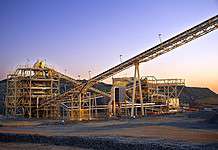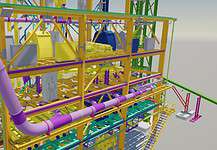 MEET Buenos Aires: a cosmopolitan metropolis with old-European charm and contemporary barrios (neighbourhoods). It is a city that effortlessly mixes the old and the new. Antique stalls in San Telmo
MEET Buenos Aires: a cosmopolitan metropolis with old-European charm and contemporary barrios (neighbourhoods). It is a city that effortlessly mixes the old and the new. Antique stalls in San Telmo
rival sleek designer shops in Palermo, and milongas (tango parties) are just as popular as trendy nightclubs. Historical cafés are crammed between Starbucks stores and local steakhouses put MacDonald’s to shame.
On the fringes of Buenos Aires’ grand, leafy parks are downtrodden, dilapidated streets. The Argentinian capital, famous for its fútbol, will seduce you like Paris but shock you like a true Latin American city. Sitting on the edge of a bustling port, Buenos Aires, home to about 13 million people, is very much on the rise and is rapidly becoming an important node in the global economic system. (A study in 2010 revealed it was the noisiest city in Latin America and the fourth noisiest in the world, thanks to the thriving Argentine economy resulting in more cars being on the roads and an increase in construction work).
Yet the lively, cultural epicentre of South America that Buenos Aires is today is a far cry from its earlier years, which were dominated by political and economic turmoil.
Up until the country’s first free elections in 1983, the city was targeted by military coups and political infighting. The ‘Dirty War’ in 1976 led to the killing of 30,000 people by the military during the years of the junta. This event is still marked today by the victims’ mothers, who gather in the city’s main square, Plaza de Mayo, in remembrance of their lost children.
The military dictatorship also resulted in many financial problems. During the peak of Argentina’s economic crash in 2001, unemployment was at its highest level. The state froze private bank accounts, resulting
in daily protests and marches throughout the city. The Plaza de Mayo and Avenida de Mayo (a major Buenos Aires street connected to the Plaza) are still popular places for protests today, with many porteños (the people of Buenos Aires) voicing their political and community concerns.
The end of military dictatorship and return of democracy have, however, marked a new era for Buenos Aires. Culture vulture Founded by the Spanish in 1536, when aristocrat Pedro de Mendoza attempted to establish a permanent settlement, the second largest city in South America (after Brazil’s Sao Paulo) is known for its rich culture and European-style architecture. Buenos Aires attracts millions of tourists every year and is often referred to as the Paris of South America, with its myriad colonial buildings scattered among a maze of cobblestoned paths crisscrossing its diverse barrios.
The La Boca barrio, the old port neighbourhood, is famous for the colourful houses that line the Caminito (a street museum) and its fútbol (soccer) stadium La Bombonera, which is home to one of the world’s most famous soccer clubs: the Boca Juniors. La Boca is also well known for its professional tango dancers who perform up and down the pedestrian-only streets while tourists watch from sidewalk cafés.
Palermo is the trendier barrio where many of the top designer boutiques and upmarket bars are located, while affluent Recoleta is known for its cemetery where many of Argentina’s historical figures are interred in opulent mausoleums decorated with marble and statues. Eva Peron, wife of President Juan Peron and as such the First Lady of Argentina, who was affectionately called Evita by the locals, is likely the most famous Argentinian laid to rest there. San Telmo, one of the oldest neighbourhoods in Buenos Aires, is the cultural centre of the city and is characterised by well-preserved 19th century architecture. This barrio is lively every day of the week, but every Sunday San Telmo’s main street, Calle Defensa, is closed to traffic and transformed into an antique fair. Hundreds of vendors open their shops and stalls to the public, while musicians and street performers bring the neighbourhood to life. Larger than life Many landmarks in Buenos Aires are world-famous, including the Teatro Colon opera house and the infamous Casa Rosada (the Pink House) at the eastern end of the Plaza de Mayo: the official Presidential Palace of Buenos Aires that features the balcony upon which Evita sang to thousands of Peronists. Numerous museums, art galleries, cathedrals and parks are scattered throughout the city, providing plenty for the keen tourist to see.
Buenos Aires also has as many fashion designers as its European counterparts, so browsing the boutiques is sure to provide a well-earned break from absorbing the city’s history.
Beefed up As is the beef capital of the world, Argentina is renowned for its mouth-watering steaks. Indeed, the country has the world’s second-highest consumption rate of beef and is the third-largest beef exporter, behind Brazil and Australia.
Bife de chorizo, a prime cut of meat much like a sirloin or rump steak, is the most popular dish. Almost as famous is the parrillada: a sizzling platter of every possible cut from the animal, including intestines and
kidneys, with a juicy morcilla (blood sausage) on the side. Just don’t expect to eat out before 9pm as parrillas (steakhouses) only open around then and to porteños sitting down to eat before 10pm is unheard of. If you turn up to a restaurant at midnight, the waiters and other diners won’t bat an eye. This relaxed approach to everyday living is common in Buenos Aires. Most shops open late in the morning and close around 10pm, with many shutting between 12pm and 4pm for lunch.
The beautiful game For soccer fanatics, Buenos Aires is the place to be: fútbol is probably the most important aspect of Argentinian culture and no other sporting game compares to a South American fútbol match. Every Argentinian family follows a team religiously, and there can be severe consequences for any family member who chooses to follow a different team. Without doubt, the country’s most famous retired footballer is Diego Maradona and its most celebrated current player is Lionel Messi – considered by many as the world’s greatest footballer today. Attending an Argentinian football game is an experience in itself: not only do the teams deliver skilful performances, but watching the crowd is just as mesmerising as they sing well-rehearsed songs often accompanied by mini-orchestras.
Fans are so passionate about their teams that security guards are required to surround supporters barracking for the visiting team in order to protect them at the end of the match. Globally-recognised Argentinian football teams include Boca Juniors and River Plate, but with more than 20 teams in the Argentinian league, it’s no wonder this sport is embedded in Argentinian culture. Flying and staying
Accommodation is varied in Buenos Aires but most decent hotels are well within the budget-minded traveller’s price range. For long-term visits, consider renting an apartment as they are cheaper than the
average hotel and provide the comforts of a typical home.
Buenos Aires is easily accessible from North America, Europe, Australasia and many other South American cities. Aerolíneas Argentinas flies from Sydney to Buenos Aires – stopping in Auckland, New Zealand – from $1500 return, subject to travel dates.
By Helena Bogle






















